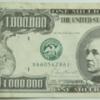Hi Guys
I have been doing quite a bit of Metal marking on stainless steel recently and I have had some good results with text marking.
I am getting a bit of inconsistency with solid logos though.
I have had a look around the web and there is a lot of differing advice, some say 600dpi, some say 1000 dpi, some say maximum power, some say 80 percent.
Any advice would be greatly received.
Thanks
Pat
p.s. im using cermark LMM-6000




 Reply With Quote
Reply With Quote
 )
)








